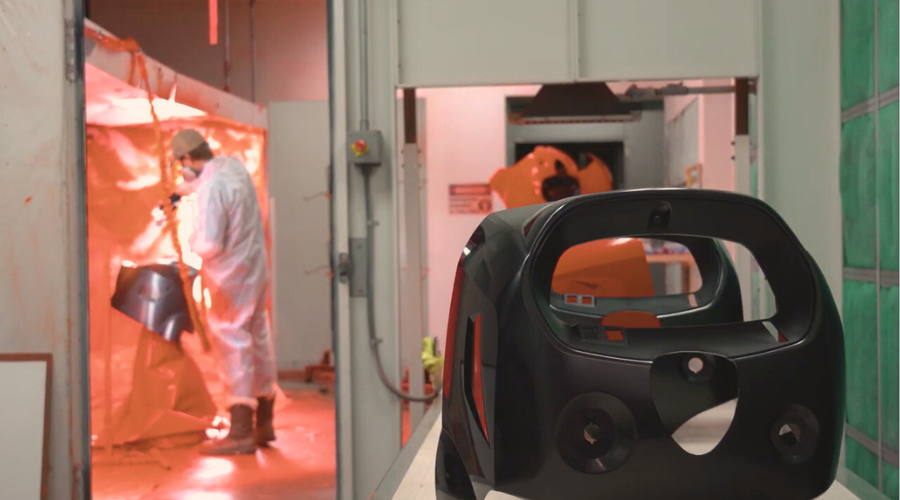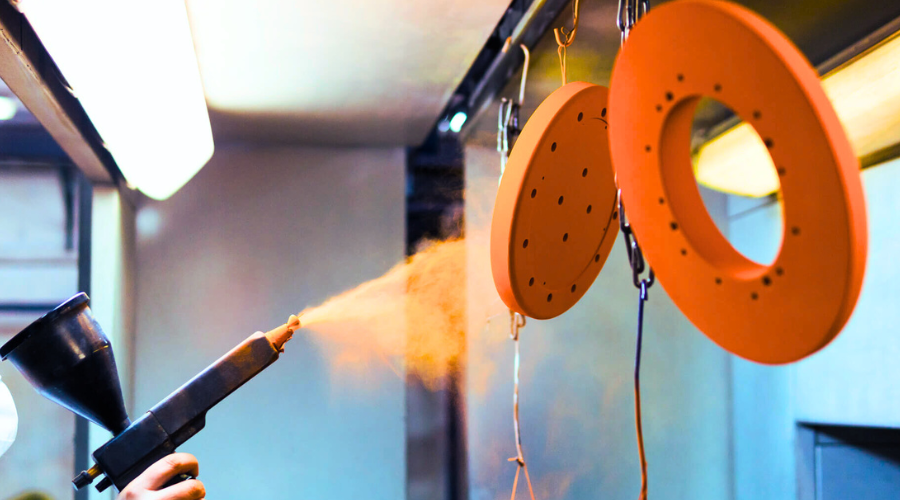Contents
When it comes to finishing techniques for metal surfaces, anodizing, powder coating, and painting are three of the most popular methods. Each of these processes offers unique benefits and is suitable for different applications. This article provides a brief overview of these three techniques, outlining their processes, advantages, and typical uses.

Anodizing
- Process
Anodizing is an electrochemical process that converts the metal surface into a durable, corrosion-resistant, anodic oxide finish. Primarily used on aluminum, the process involves immersing the metal in acid electrolyte bath and passing an electric current through the medium. This results in the formation of an oxide layer on the surface. - Advantages
Corrosion Resistance: The oxide layer formed is highly resistant to corrosion.
Durability: Anodized surfaces are harder and more durable than raw metal.
Color Variety: Although anodizing typically results in a clear, metallic finish, dyes can be added to the process for a range of colors.
Environmentally Friendly: The process is relatively eco-friendly compared to other coating methods. - Typical Uses
Architecture: Window frames, doors, and curtain walls.
Consumer Goods: Electronic enclosures, cookware, and sporting goods.
Automotive and Aerospace: Structural and decorative components.
Powder Coating
- Process
Powder coating involves applying a dry powder to a metal surface, which is then cured under heat to form a solid layer. The powder can be thermoplastic or thermoset polymer and is applied using an electrostatic spray gun. Once coated, the metal part is heated in a curing oven, allowing the powder to melt and form a continuous, durable film. - Advantages
Durability: Powder coatings provide a tough, resilient finish that is more resistant to chipping, scratching, and fading than traditional paint.
Environmental Impact: Powder coating is free from solvents and emits negligible volatile organic compounds (VOCs), making it more environmentally friendly.
Finish Variety: Available in a wide range of colors and textures, including matte, glossy, and metallic.
Efficiency: Overspray can be recycled, reducing waste. - Typical Uses
Automotive: Wheels, frames, and various engine components.
Appliances: Refrigerators, washing machines, and air conditioners.
Furniture: Metal office furniture, outdoor patio sets.

Painting
- Process
Painting involves applying liquid paint to a surface using methods such as brushing, rolling, or spraying. The paint comprises pigments, binders, solvents, and additives, which, when applied and dried, form a protective and decorative film on the metal surface. - Advantages
Flexibility: Can be applied to a wide range of materials, including metals, plastics, and wood.
Cost-Effective: Generally more affordable upfront compared to other coating methods.
Ease of Application: Requires less specialized equipment and can be done in various environments.
Aesthetic Variety: Unlimited color options and various finishes, including matte, gloss, and satin. - Typical Uses
Construction: Structural steel, bridges, and railings.
Consumer Goods: Toys, garden tools, and household items.
Automotive: Body panels, trim, and custom paint jobs.
Conclusion
Anodizing, powder coating, and painting each offer distinct advantages and are suitable for different applications based on the required durability, aesthetic, and environmental considerations. Understanding the strengths and typical uses of each finishing technique can help manufacturers and consumers make informed decisions about the best method for their specific needs. Whether for industrial, automotive, or consumer goods, selecting the appropriate surface finishing technique is crucial for ensuring product longevity and visual appeal.
-q4gvl4k29y4hq8j9rjpapvj0ft06fje63olt7p210i.png)

